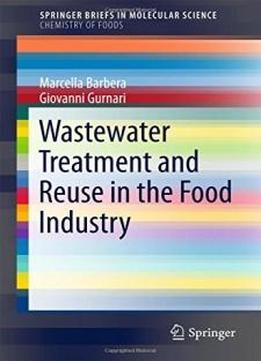
Wastewater Treatment And Reuse In The Food Industry (springerbriefs In Molecular Science)
by Marcella Barbera /
2017 / English / PDF
1.2 MB Download
This Brief is devoted to clean drinking water, which is (one
of) the most important asset(s) in the food and beverage
industry. In the present time of increasing water scarcity in
many areas of the world, supply of clean water especially in
the production and packaging chain of foods and beverages, is a
crucial issue. This Brief hence outlines why functioning
purification and reuse systems for wastewater are becoming more
and more interesting and promising technologies in solving the
challenge.
This Brief is devoted to clean drinking water, which is (one
of) the most important asset(s) in the food and beverage
industry. In the present time of increasing water scarcity in
many areas of the world, supply of clean water especially in
the production and packaging chain of foods and beverages, is a
crucial issue. This Brief hence outlines why functioning
purification and reuse systems for wastewater are becoming more
and more interesting and promising technologies in solving the
challenge.
Readers find in this Brief an introduction to different
innovative treatment methodologies. The authors discuss key
parameters (such as the water volume to be treated, types and
chemical and physico-chemical characteristics of pollutants,
but also the intended use of the recycled water) and present
various methodologies, such as separation or concentration
systems, centrifugation, evaporation, filtration, flotation,
gravity separation, membrane techniques, aerobic and anaerobic
biological treatments, as well as combined or hybrid systems.
Selected specific methods are presented in detail, specifically
a new adsorption method for the removal of metal ions.
Readers find in this Brief an introduction to different
innovative treatment methodologies. The authors discuss key
parameters (such as the water volume to be treated, types and
chemical and physico-chemical characteristics of pollutants,
but also the intended use of the recycled water) and present
various methodologies, such as separation or concentration
systems, centrifugation, evaporation, filtration, flotation,
gravity separation, membrane techniques, aerobic and anaerobic
biological treatments, as well as combined or hybrid systems.
Selected specific methods are presented in detail, specifically
a new adsorption method for the removal of metal ions.











